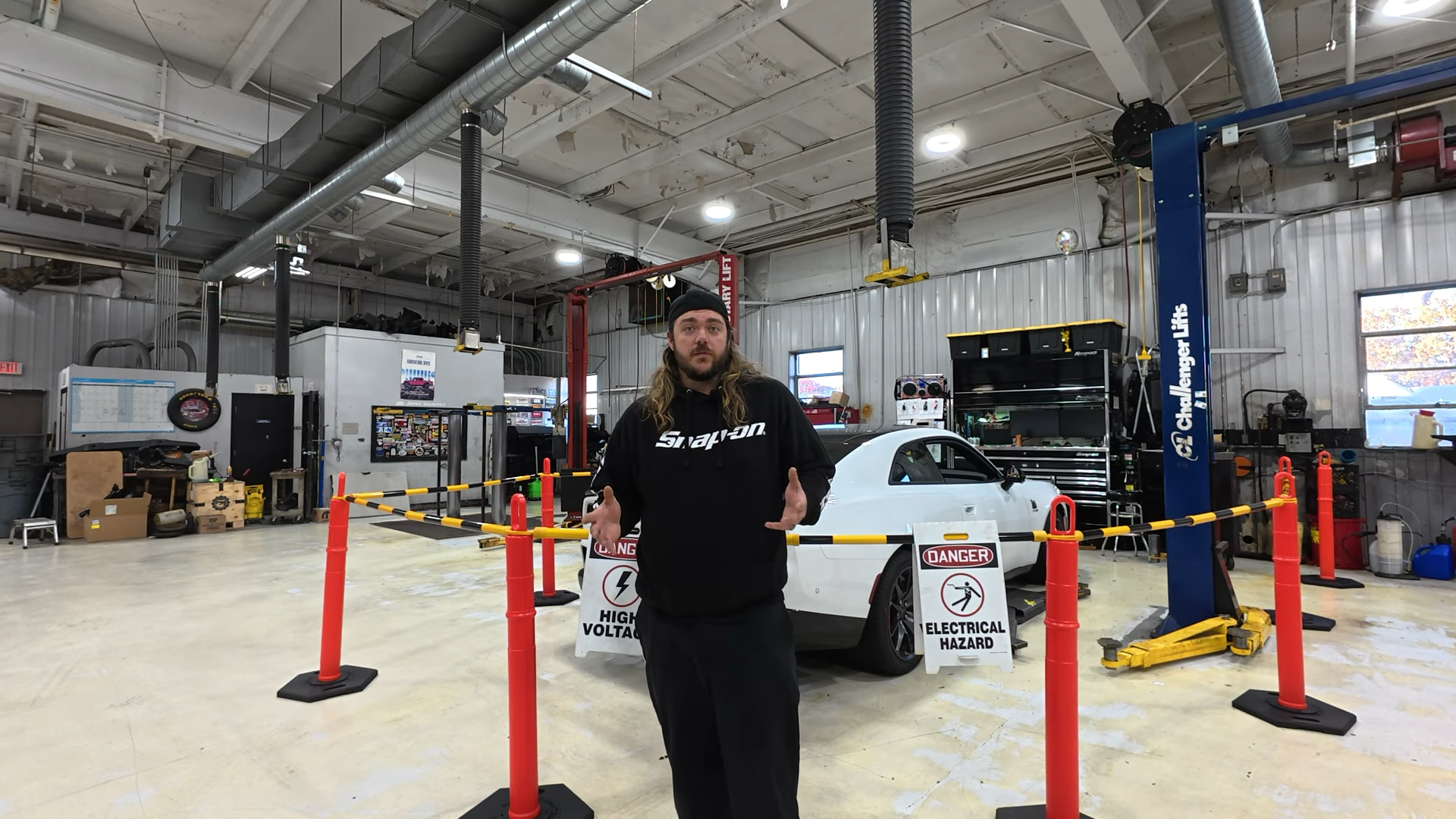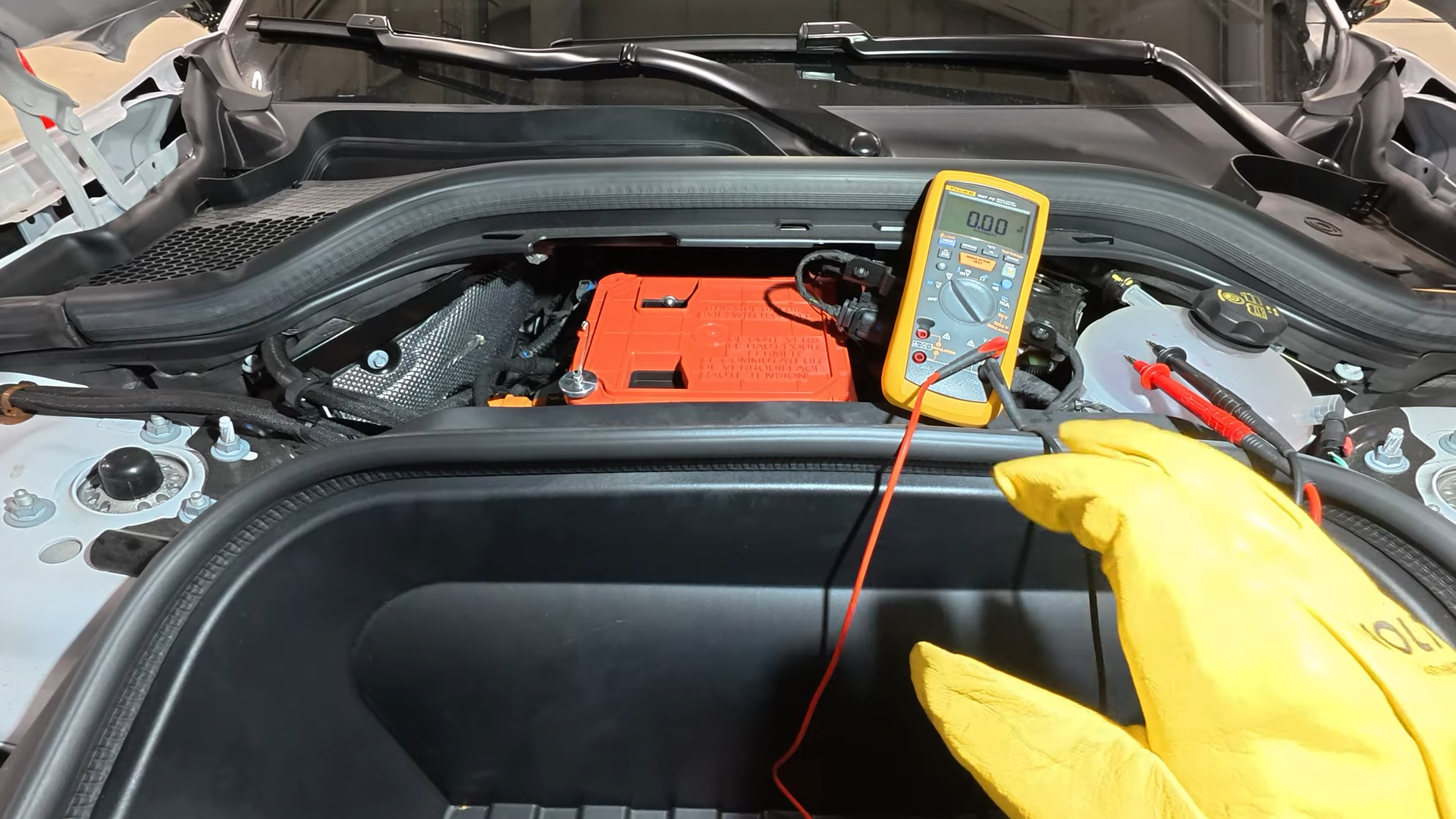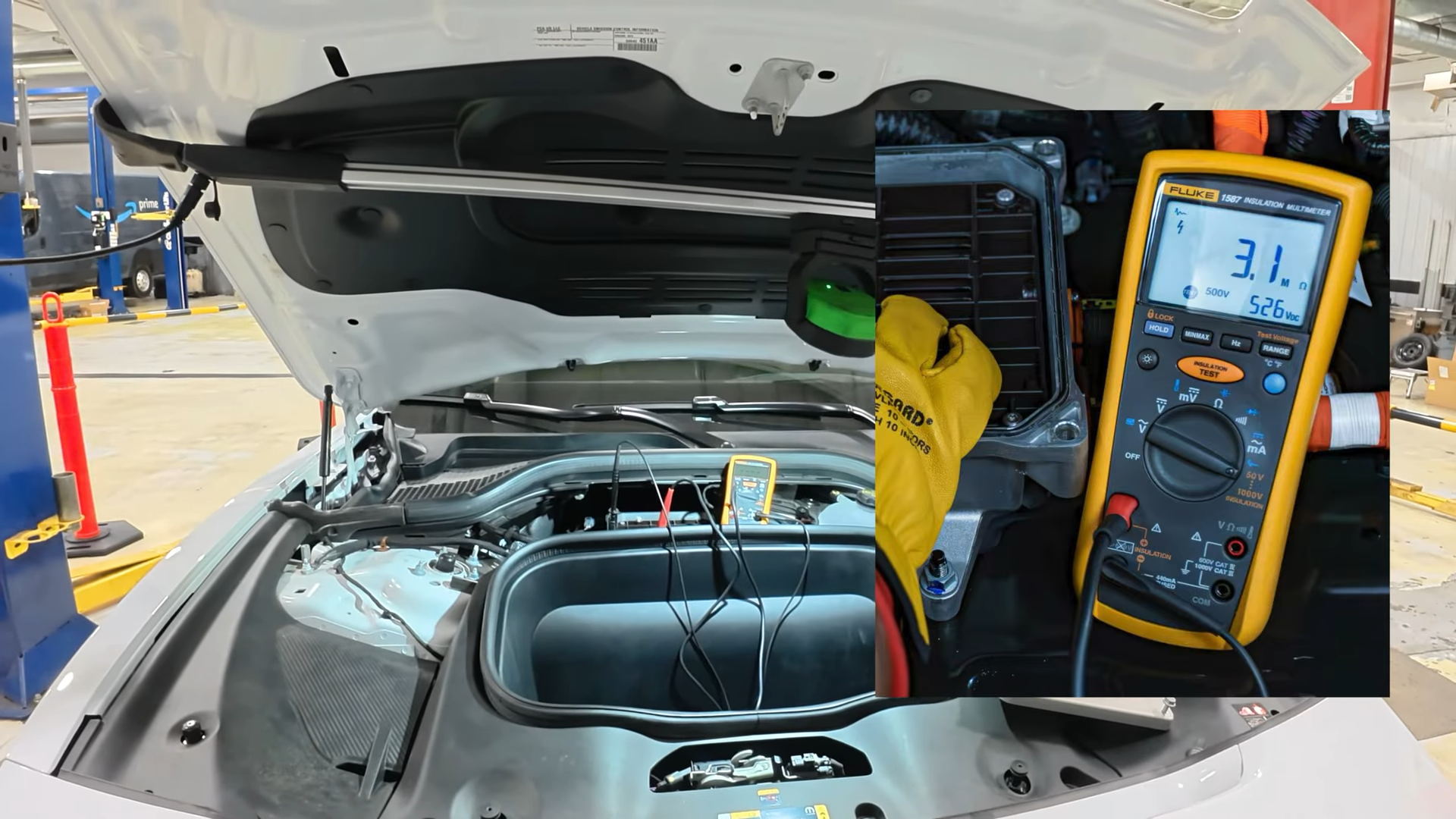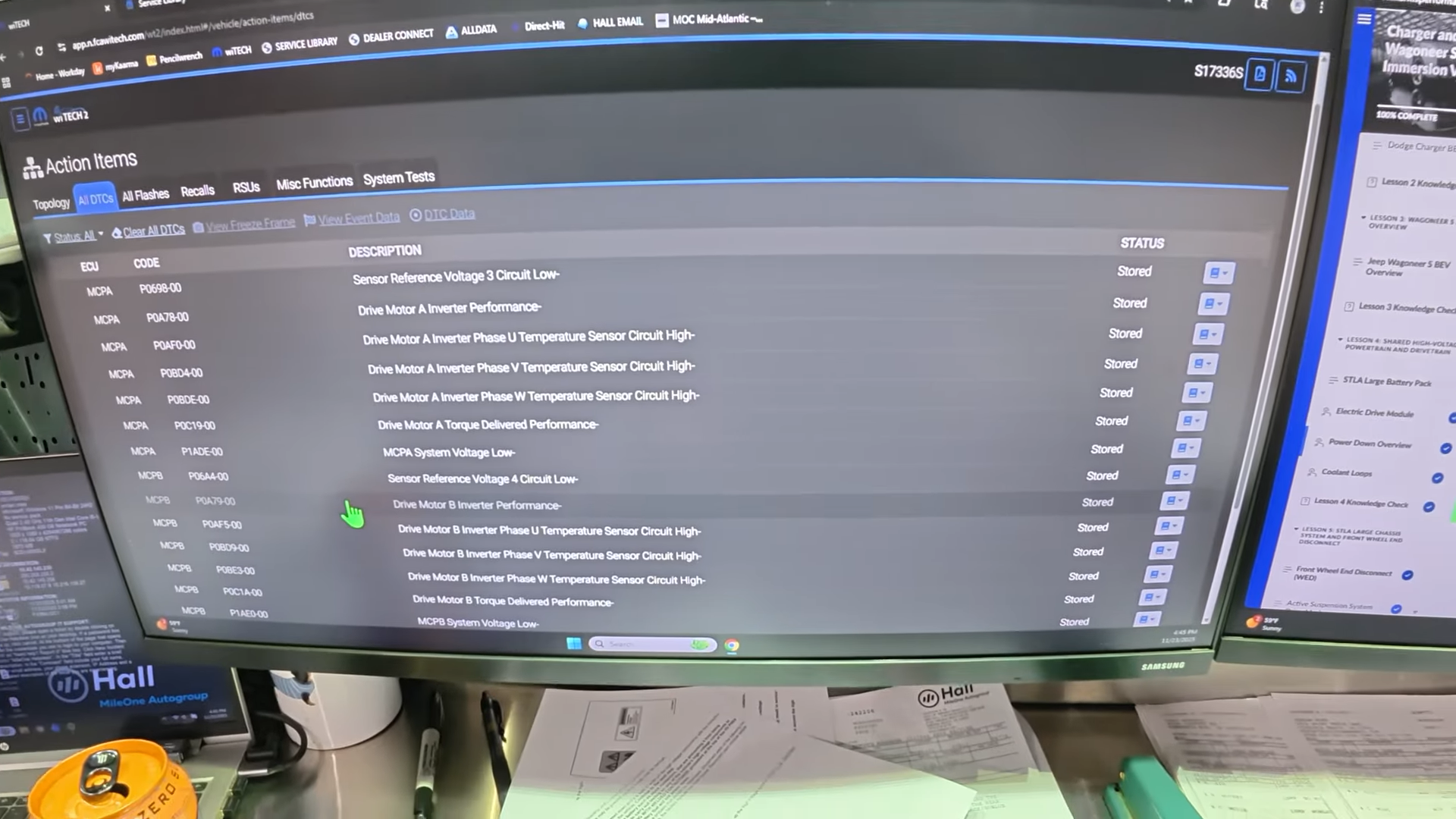Inside The Bay: Dodge Charger Daytona’s High-Voltage Service Procedures
High Voltage Power Down, Loss Of Isolation Test, & Power Up Procedure
When it comes to real-world EV service knowledge, there aren’t many people as transparent or as trusted as Jordan Rose (@MoparTechJordan). Jordan is a certified Mopar technician at Hall Chrysler, Dodge, Jeep®, and Ram in Virginia Beach, Virginia, and he’s quickly becoming the go-to source for honest, dealership-level explanations of Stellantis’ growing lineup of electrified vehicles — especially the 2024–2026 Dodge Charger Daytona EV.
In his most recent video, Jordan walks his viewers through something most owners will never witness firsthand: the full high-voltage power-down procedure, a complete Loss of Isolation test, and the proper way to bring the Charger Daytona back online. It’s the kind of walk-through that takes the mystery out of EV service, but still delivers a crystal-clear reminder that this is not something anyone should attempt outside of a certified shop.
Why the Power-Down Process Exists –

Dodge’s new Charger Daytona isn’t just another EV — it is the brand’s first modern muscle car to run entirely on battery power. That comes with massive performance benefits, but also with a serious requirement for safety. Even when an EV “looks” off, the high-voltage battery can hold several hundred volts of stored energy. That’s more than enough to cause severe injury or worse, which is why Stellantis requires very strict procedures whenever a technician works near an orange cable or a high-voltage component.
Jordan’s goal isn’t to teach people how to work on their own EV. Instead, he wants to give drivers, body shops, and even other technicians a better understanding of what happens behind the service counter — why high-voltage repairs take longer, why the car is quarantined, and why these jobs should only be done by certified professionals.
What Electrical PPE Really Means –
Before Jordan even touches the Charger Daytona, he goes over something most people outside the industry misunderstand: electrical PPE.
Electrical Personal Protective Equipment (PPE) is the specialized safety gear that protects technicians from electric shock, arc flash, grounding faults, and unintended contact with energized components. This isn’t the same as basic shop gloves or safety glasses. EV technicians use:
-
Class 0 or Class 00 insulated rubber gloves
-
Leather glove protectors
-
Safety-rated face shields or goggles
-
Arc-rated sleeves or jackets
-
Insulated footwear or non-conductive mats
-
Lockout/tagout devices
-
High-voltage insulated tools
Jordan puts it plainly: PPE isn’t optional. PPE is what keeps techs alive if something behaves unexpectedly.
Getting the Charger Daytona Safely Into the Bay –

One of the most interesting parts of Jordan’s explanation is something most people have never considered. Pushing an EV too fast can actually generate voltage through the motors — because electric motors and generators operate on the same principles. That’s why technicians move the vehicle slowly, keeping wheel speed minimal so the motors don’t create any unwanted electricity.
Once the vehicle is in position, Jordan sets up what Stellantis calls a high-voltage quarantine zone. Barriers, warning signs, cones — everything needed to make sure nobody wanders into the work area. Sales people, detailers, and curious walk-through staff are notorious for poking around, and a Charger Daytona undergoing HV service is not the time for sightseeing.
Pre-Checks and Tools –
Jordan lays out the tools he needs before touching anything high-voltage:
-
Stellantis’ official High Voltage Interlock Loop (HVIL) test plate
-
Fully inspected, certified insulated gloves
-
A Faraday bag for the keys
-
The proper lockout/tagout kit
-
A “shepherd’s hook” emergency extraction tool
He also removes everything metal from his body. Belt buckle, phone, pocket screwdriver, wallet — anything conductive comes off. Again, these aren’t technician “preferences”; this is Stellantis procedure.
Accessing the Charger Daytona’s High-Voltage System –
Once the hood is open, Jordan removes the cover from the High Voltage Power Distribution Center (HVPDC) — the metal enclosure that contains the high-voltage junctions and connections. He then installs the HVIL test plate. Its orientation determines whether the low-voltage safety loop is open or closed.
The HVIL system is simple but critical: if the loop breaks unexpectedly, the battery shuts down internally by opening its contactors. That’s the EV equivalent of cutting power at the breaker panel in a house.
Verifying Live Voltage Before Shutdown –

Before disabling anything, Jordan turns the car to READY mode and checks voltage at the test ports. A healthy Charger Daytona should show over 200 volts, and in his case, well over 400 volts. This test verifies that the battery pack is online, communicating correctly, and not hiding a deeper issue.
If the system showed zero volts here, Jordan would not proceed. That would indicate a fault needing diagnosis before shutdown could even begin.
Disabling High Voltage –

To disable the system, Jordan:
-
Turns the vehicle off
-
Waits for the high-voltage system to discharge
-
Accesses the rear compartment and opens the green HVIL connector
Opening that connector breaks the loop and forces the contactors inside the battery pack to open, making the system electrically safe. A lockout/tagout pin can then be installed to stop anyone from reconnecting the vehicle accidentally.
Back at the HVPDC, Jordan checks voltage again. Now, the meter should read near zero. Anything above 50 volts would indicate a short, internal leak, or a component failing to isolate properly.
Loss of Isolation Testing –

Next comes the part that Jordan says not enough people talk about: the Loss of Isolation test.
A loss of isolation means high voltage is leaking into the vehicle’s metal chassis. This can happen from damaged wiring, water intrusion, or a compromised battery pack. It’s incredibly dangerous — so technicians perform an insulation test using the Fluke meter, which sends a controlled voltage into the circuit to measure resistance.
Jordan’s Charger Daytona reads around 3.1 megaohms, which is comfortably within Stellantis’ specifications.
Powering the System Back Up –
When the vehicle is confirmed safe and any repairs are complete, Jordan reverses the process:
-
Reinstalls the HVPDC cover
-
Reconnects the green HVIL connector (carefully — it’s easy to break)
-
Hooks the 12-volt battery back up
-
Cycles the ignition into READY so the pumps and modules reinitialize
-
Scans and clears the fault codes generated during the shutdown
Only after everything passes does the Charger Daytona get cleared for release.
Why Jordan’s Content Matters –

Jordan’s videos aren’t entertainment — they’re real-world education that helps technicians, shop owners, and enthusiasts understand the level of precision and safety that goes into servicing Dodge’s first electric muscle car.
In a world full of guesses, misinformation, and armchair engineers, Jordan is showing exactly how it’s done — safely, correctly, and by the book.






No replies yet
Loading new replies...
Join the full discussion at the Mopar Insiders Forum →